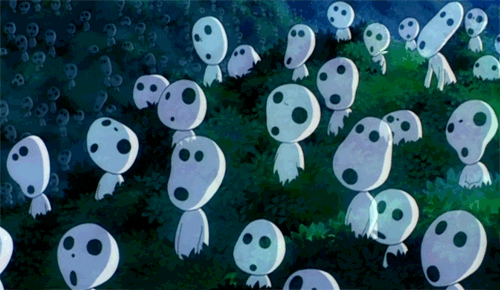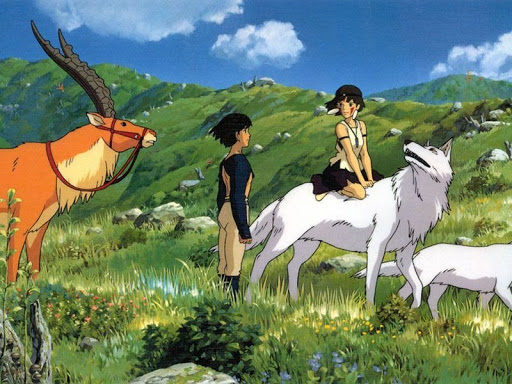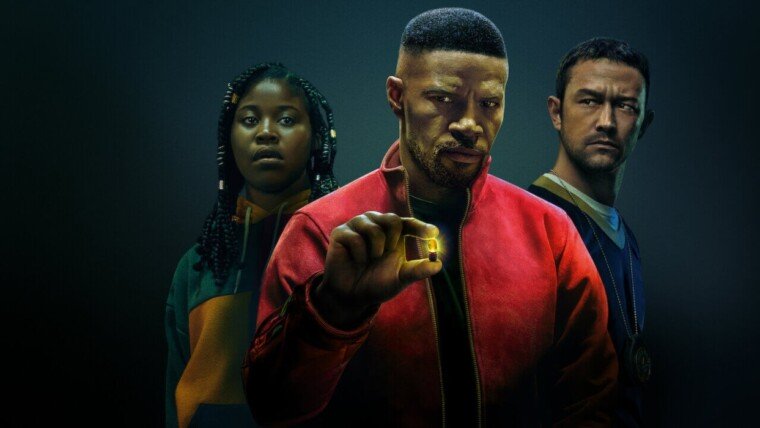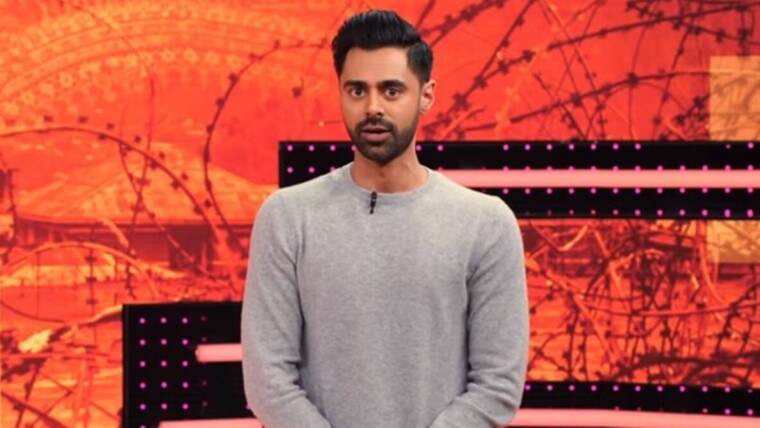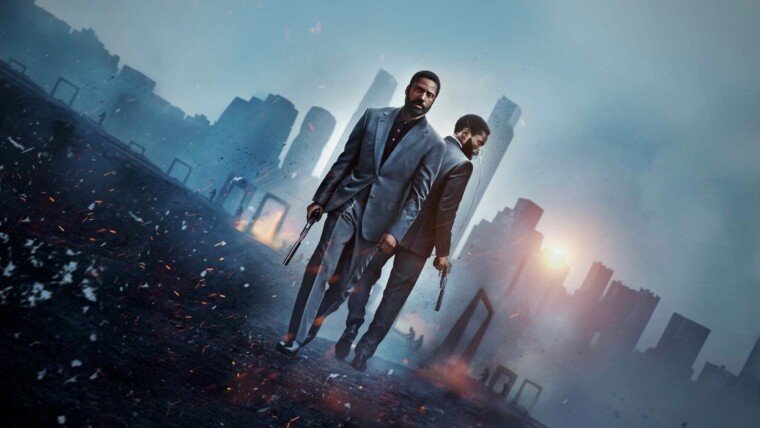This Princess Mononoke review contains minor spoilers…
What day is it? I don’t really know. Every cycle is the same to me. Monday. Thursday. Wednesday. Sunday. Do these words mean a thing? Time… Oh, the wheels of this construct… is moving ever so slowly.
As I lumbered atop the balcony for the first time in a while, my optics picked up a blinding light. That burning sensation trickles to the tip of my rugged beard. I have not felt it in so long, that energy, that life. I peer into the distance, my eyes adjusting to the burst of light. Sparrows. I witness an avian flock. “Hark!” I cried, as they flew toward the wispy clouds in the distance. My envy rose. The vast freedom the sparrows enjoy in the breeze, flittering about with their aerial gifts, I longed for it. That green soon turns to dread. I start fearing the worst. Does mankind still exist? Are there more of us out there?
I cusped my head in my hands, pondering upon the day we were told to distance ourselves. That announcement on that damned box could have only spelt out isolation. We were cut off, left to sulk in our rooms, scratching off the days on our prison cells. It has been an eat, sleep, work (who am I working for anyway?), eat, sleep, eat, sleep, work, etc. flow with every sunset and sunrise.
However, there has been a piece of information that I have been poring through: Princess Mononoke. It’s dated, having been conceived in the year 1997. Nevertheless, its contents have certainly been a balm in these dire circumstances. Allow me to share my findings with you.
“In ancient times, the land lay covered in forests, where from ages long past dwelt the spirits of the gods. Back then man and beast lived in harmony but as time went by most of the great forests were destroyed, those that remained were guarded by gigantic beasts who owed their allegiance to the great forest spirit. For those were the days of gods and demons…”
The man behind the art is Hayao Mizayaki, an individual revered for his animating skills and the ability to tell beautiful tales through the medium. He has won several accolades for his work and has been christened as one, if not the best, Japanese animated filmmaker. I’ve got to admit that I’ve only watched one of Miyazaki’s other works – Spirited Away – and this may not be the most ideal situation considering my plight. I NEED MORE DATA! But, oh well, it is what it is. I’ve got to work with what I have.
The plot of Princess Mononoke follows Ashitaka, the last Emishi prince, who finds himself on a journey to the west. After an unfortunate encounter with a demon in his village, Ashitaka is cursed to death, his fate unchangeable. However, the village Oracle gives him a hope, by which he must leave, and seek out the Shishigami, otherwise known as the deer-god, for a cure.
With his trusty red elk, Yakul, he traverses vast mountains and plains, pushing forward until he finds himself at a crossroads with both nature and man. Iron Town, a technologically advancing community-led by lady Eboshi is at odds with the forest. The animal gods are displeased with the way the mankind has been destroying the land. San, a child of the forest, whom Eboshi dubs “Princess Mononoke”, vows to defeat the leader in order to restore peace to the land. As tensions boil, can Ashitaka intervene in this battle of ideologies before they both consume each other?
The animation of this feature is breathtaking. It reminds me of the world I used to live in before the lengthy sentence to loneliness. The slight movement of the grass stalks, whistling in the plains, while a creature trods upon it. Or the icy caps of the mountains far in the distance, white and pure. Man, the environment was a sight to behold, its fantastical elements bringing a luminous joy to the forest, sparkling with fiery glows. There were no limits to Miyazaki’s fluid imaginations as the hand-drawn animation glues on to the audience’s eyes. Combined with Joe Hisaishi’s visceral score, it truly conjures an epic portal through the forest, rattling us with awe like a tiny Kodama.
Being set in a period during which Shintoism was still prevalent, of course, there will be an abundance of ‘kami’ (nature spirits). These beings come in many forms; wolves, boars, Kodamas, and deer being some of them. The great forest spirit assumes the form of a multi-antlered stag by day and a translucent kaiju by night. The Kodama populate the forest grounds, vanishing in and out of sight as they clatter in unison. Without a doubt, there is a good balance to what Miyazaki shows us. The forest is never too saturated with creatures, and even the ones that do appear have features and mannerisms which make them distinct from one another.
Now, we’ve seen many films deal with the profound theme of environmentalism. Ethan Hawke’s Catholic priest’s beliefs take a drastic turn in First Reformed, shedding the armour of God to instead place a cloak on the environment. 2006’s Antarctic-escapade, Happy Feet, features a clear-as-ice message with regard to sea waste and pollution. Darren Aronofsky’s mother! allegorises the vicious cycle of annihilation upon the Earth, gashing the fabrics of nature apart, exposing her nakedness, and scorching a dishevelled core till there is nothing left. Nevertheless, Princess Mononoke, while maintaining a strong message with regard to man vs nature, does not execute it quite the same way.
Mankind has often been villainized in various films, assuming an antagonistic role that must be stopped at all costs before they consume the very world that they live in. Unlike the above films, Miyazaki posits that there may be a Venn of grey in Princess Mononoke. Lady Eboshi, the leader of Iron City, may be one to promote industrialisation and the destruction of the environment. At first glance, she may seem like an outright villain but… there are moments peppered throughout the film whereby her benevolence manifests. Her rescue of the women from brothels, giving them a place in society, and allowing them to take on tasks equal to those of men showcase her mission to protect the oppressed. She allows lepers to be a part of the technological innovations during a time when they were usually cast off from society. Therefore, as much as the human element tries to destroy, it also brings a certain hope to itself.
On the flip side, the world is cruel. They may be the oppressed party, constantly being pushed around by the humans, but they are ruthless in their demeanour. Bloodthirsty, they are, plotting to destroy their enemies in a violent manner. There are scenes where wolves discuss chewing heads off, apes intending to consume humans for power, and the boars expressing their desire to decimate Iron Town. So, are they all righteous?
Fear. Anger. Hate. These are all components that have divided the two factions. Casualties abound on both sides, and it’s all due to extreme emotions of detest for one another. To paraphrase the ol’ Jedi Master, each negative emotion leads to the next, evolving into something much worse and ultimately causing a great deal of pain. Hate is the demon that overcomes a boar at the beginning of the film, causing his rampage through the forest and cursing Ashitaka to a deathly fate.
On the other hand, Ashitaka exists as the voice of reason. As an outsider, Ashitaka’s original mission to find a cure is abandoned to pursue a higher calling: bring a stop to the enmity causing the rift between man and nature. Courage. Calm. Harmony. All of these traits are personified in Ashitaka, bringing contrast to Eboshi and several kami.
San, Princess Mononoke herself, starts off with the forest folk. Her animalistic tendencies rage on as she persists on attacking Iron City. Nevertheless, she softens up after Ashitaka saves her life, causing her to question her belief that all of humanity is evil. Eventually, she goes through a great ordeal to save the world she loves alongside Ashitaka. San might not adhere to mankind’s greed but at least there is an understanding that coexistence is a viable circumstance.
What Mizayaki did was great. There are moments of antagonism from both sides but there is no explicit villain. You get to see both sides of the story, and you can empathize with both. He sent the message out there that it was possible for humans to perform technological feats and continue to exist in harmony alongside nature and the environment but, of course, it must be done with love, care, and respect.
The filmmaker has commented on his creation in the past, citing his reasons to create a product with thematic ambiguity as an address of the “needs and pleas” of the next generation.
“We’ve made many films in the past, and our goal with those films has been to send a message of hope and the possibility of happiness to growing children. What we realized was that by continuing to make movies that only taught them about hope and happiness, we were in fact turning a deaf ear to their very urgent needs and pleas, and that if we did not make a movie that directly addressed their needs and pleas, we no longer would have the right to make films that would encourage them to be hopeful and happy. So, we made this film knowing that we would need to step outside the boundaries of what you call entertainment; we made this film from a sense of mission.”
Princess Mononoke teaches us to not go to extremes but instead find an equilibrium. The stimulus of fear is perilous, raising unnecessary panic and frustration. If these emotions are left unchecked, hostile reactions will eventually cause woe and anguish. So, yeah, humans should strive to be more like Ashitaka.
During the time of writing this, I have come to realise that it was irrational to fear the solitude that had befallen upon me. I look back at the birds in the air, no longer envious, but rather with a feeling of joy.
Harmony.
Note: The writer actually has friends and is doing fine.
Princess Mononoke is currently streaming on Netflix.



